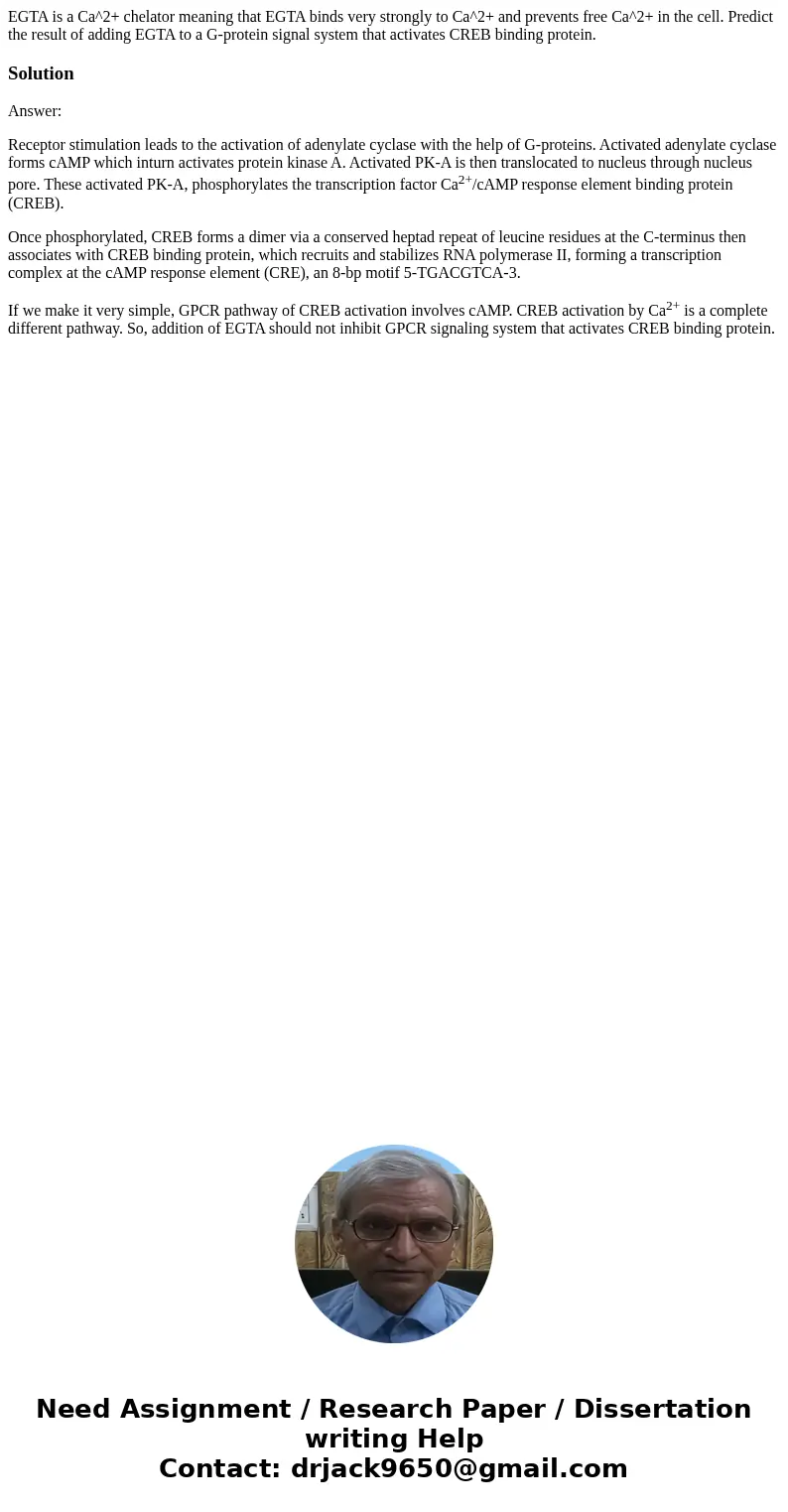EGTA is a Ca2 chelator meaning that EGTA binds very strongly
Solution
Answer:
Receptor stimulation leads to the activation of adenylate cyclase with the help of G-proteins. Activated adenylate cyclase forms cAMP which inturn activates protein kinase A. Activated PK-A is then translocated to nucleus through nucleus pore. These activated PK-A, phosphorylates the transcription factor Ca2+/cAMP response element binding protein (CREB).
Once phosphorylated, CREB forms a dimer via a conserved heptad repeat of leucine residues at the C-terminus then associates with CREB binding protein, which recruits and stabilizes RNA polymerase II, forming a transcription complex at the cAMP response element (CRE), an 8-bp motif 5-TGACGTCA-3.
If we make it very simple, GPCR pathway of CREB activation involves cAMP. CREB activation by Ca2+ is a complete different pathway. So, addition of EGTA should not inhibit GPCR signaling system that activates CREB binding protein.

 Homework Sourse
Homework Sourse